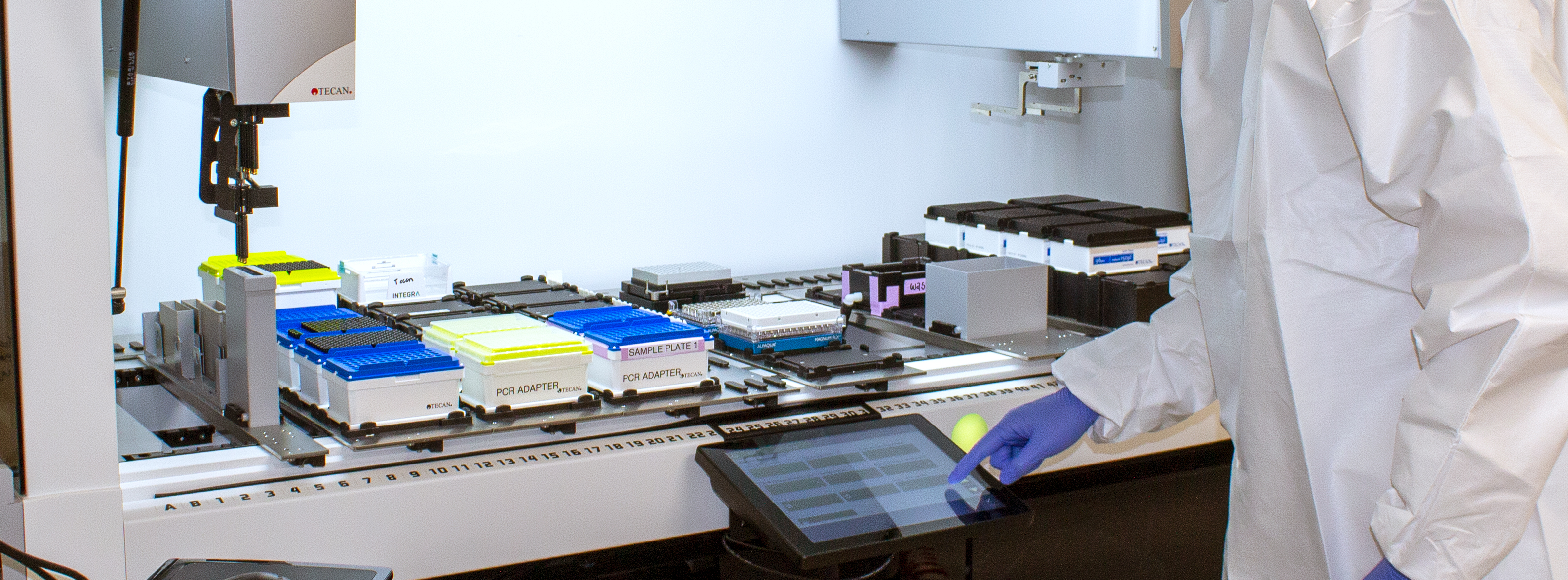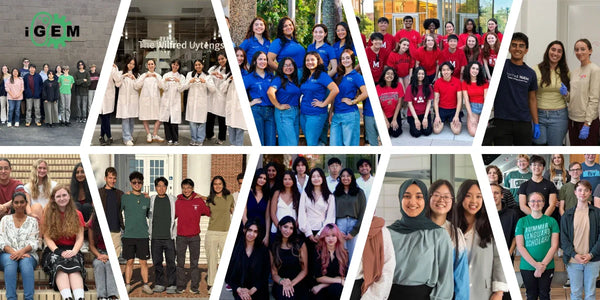How to Extract RNA from Swab and Saliva Samples
The Best Method for Efficient RNA Extraction
COVID-19 testing has been at the forefront of everyone’s mind since the pandemic started in early 2020. But what goes into a COVID-19 test, or any respiratory virus test for that matter? What devices are used for sample collection? What are the steps involved in RNA extraction? And how have testing solutions evolved to meet the changing demands of the pandemic?
What Sample Types Are Commonly Tested for COVID-19?
COVID-19 tests begin with collecting a sample. Because SARS-CoV-2 is a respiratory virus, this sample is typically collected below the upper respiratory system. Infected cells of the upper respiratory tract shed viral RNA, which can then be quickly detected by reverse transcriptase polymerase chain reaction (RT-PCR) or for more specificity, by genetic sequencing.
Swab samples, collected from the upper or lower parts of the throat (the nasopharynx or oropharynx, respectively), have been considered the gold standard due to their high sensitivity.[1] These swab samples, however, must be collected by trained healthcare professionals wearing full personal protective equipment (PPE). This requirement has led to PPE shortages throughout the COVID-19 pandemic, bottlenecking mass testing efforts.
Saliva samples have emerged as an alternative to swab samples for viral diagnostics. Not only are saliva samples easy to collect — they can be self-collected in the comfort of one’s home — their sensitivity is comparable to that of swab samples. These features make saliva samples an attractive complement to swab samples.
How to Extract RNA from Saliva & Swab Samples
The next step after sample collection is RNA extraction. But how does RNA extraction work for saliva and swab samples? Does it differ from other sample types?
When using spin columns, the general RNA extraction workflow for saliva and swab samples is similar to other sample types. There are four basic steps in spin column RNA extraction:
- Sample lysis — a lysis buffer is added directly to the sample. In SafeCollect Collection Kits, DNA/RNA Shield serves as an all-in-one sample lysis and preservation buffer. (In other words, sample lysis occurs during sample collection.) Some RNA extraction kits may include lysis tubes for mechanical lysis and enzymes (e.g. Proteinase K) for enzymatic lysis.
- Bind RNA - after lysis, ethanol or isopropanol is added to the sample, mixed, and then the entire mixture is added to a spin column. The addition of an alcohol helps promote RNA binding to the column’s silica matrix. RNA is brought into contact with the silica matrix by centrifugation. Optionally, DNase can be applied on-column after RNA binding (step 2) to eliminate contaminating DNA.
- Wash RNA — once RNA is bound, it can be washed by applying a wash buffer containing ethanol. Because the ethanol promotes RNA binding to the column’s silica matrix, RNA is retained within the column during washing/centrifugation. Additional centrifugation can be done to remove residual ethanol from the column matrix.
- Elute RNA — an elution buffer (typically nuclease-free water or a Tris-EDTA buffer) is applied to the column. The elution buffer hydrates the RNA, allowing it to dissociate from the column’s silica matrix. A final centrifugation step pools the purified RNA sample in the bottom of a collection tube, ready for analysis.
Alternatively, high-throughput kits use magnetic beads in place of spin columns, but the general workflow is the same. Samples are lysed, RNA is bound to the beads, the beads are washed, and RNA is finally eluted from the beads.
How to Choose an RNA Purification Kit
Choosing the best RNA purification kit for your application can be daunting because there are so many available options, and it is not always clear what differences exist between kits.
Zymo Research offers a variety of extraction kits, as part of a complete workflow. From column-based to automation-friendly kits, the choice depends on your specific experimental needs. For today’s pandemic, the Quick-DNA/RNA Viral Kit is the high-throughput solution for early viral detection.
Quick-DNA/RNA Viral Kit is designed for the quick recovery of viral DNA/RNA from a variety of sample types, including saliva and swab samples. The DNA/RNA purification kit comes with DNA/RNA Shield for sample collection, virus inactivation, and nucleic acid preservation. If you collect samples using Zymo Research’s DNA/RNA Shield sample collection devices, you can proceed straight to purification. Additionally, the kit features a one-step binding buffer which aids in efficient extraction and low copy viral detection.
Optionally, to reduce the viscosity of samples — saliva can be quite viscous! — proteinase K digestion makes sample handling easier and also eliminates nucleases that could degrade the nucleic acids in your sample. A recent correspondence in the New England Journal of Medicine featured proteinase K in its comparison of saliva and swab COVID-19 testing.[2]

Enabling Mass Testing with Automation
The kit described above works well for routine applications in which a handful of samples need to be processed at once. But mass testing, where samples number in the hundreds to thousands, requires a more scalable approach.
Magnetic beads can be used instead of spin columns to increase the throughput of viral DNA/RNA extraction. The Quick-DNA/RNA Viral MagBead Kit is a scalable and automatable magnetic bead format. The DNA/RNA purification kit can be used to process hundreds of reactions on any robotic liquid handler or bead mover. For example, 96 preps can be processed in just 22 minutes when using an automated system.
When paired with automation-friendly SafeCollect devices and the Quick SARS-CoV-2 rRT-PCR Kit, the Quick-DNA/RNA Viral MagBead Kit can be used for automated extraction and detection of SARS-CoV-2 viral RNA in saliva and swab samples from start to finish.
Whether you are testing swabs or saliva, a few samples or thousands, Zymo Research offers solutions supporting every step of the process, from sample collection to RNA extraction and beyond.


